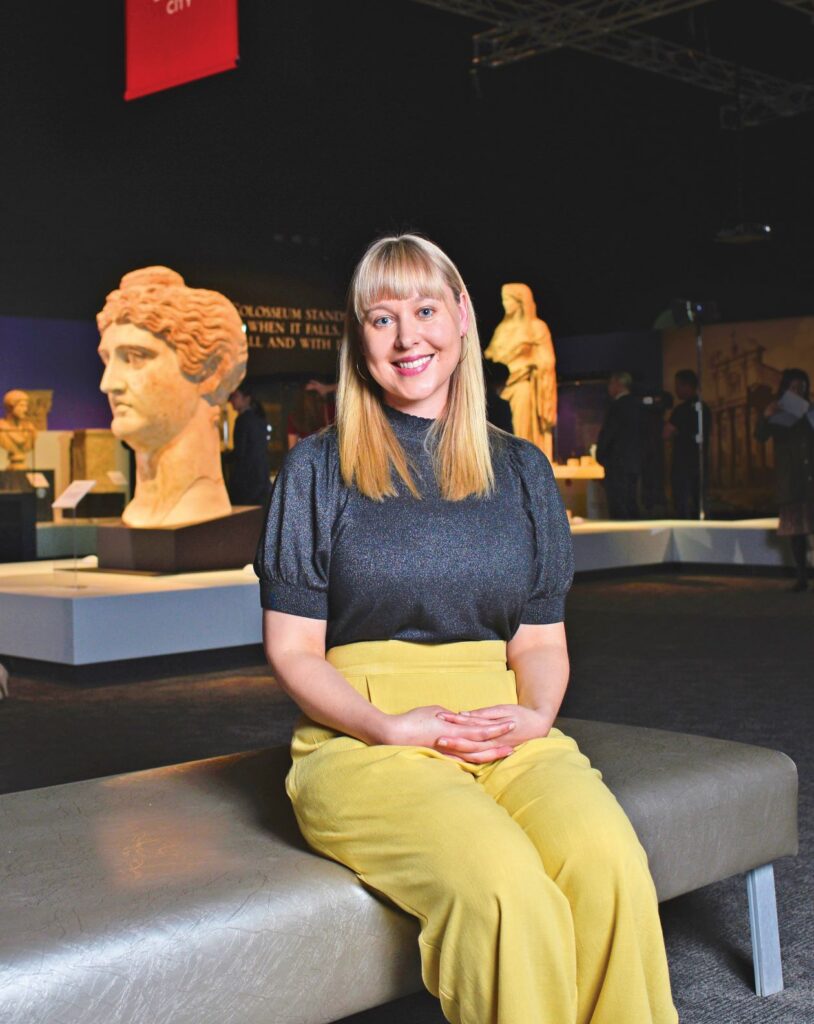
There was a lot of effort involved getting all the pieces of the National Museum of Australia’s (NMA) latest exhibition in place.
Over 200 objects were imported from the British Museum, London. Some colossal statues weighing over 1,500 kilograms and delicate 2,000-year-old glass vessel, all transported by an international team of experts manoeuvring them through different airports and customs channels.
It’s a remarkable story in its own right, yet is only part of the one being told here.
A series of magnificent sculpted marble pieces that are quintessentially Roman shine brightly in an otherwise dimly lit space, as the walls are adorned with an eclectic array of artefacts ranging from stone mosaics, bronze masks and rings through to a black-green basanite bathtub with ring–shaped handles that wouldn’t look out of place in an upmarket, inner-south real estate listing.
This is Rome: City + Empire, and working on it has been a career highlight for NMA curator Dr Lily Withycomb.
“Since I was a child I’ve loved ancient Rome; I’ve always had this deep, abiding passion,” she told Canberra Daily.
“Growing up, I used to take notes when I watched documentaries on ancient Rome and kept little volumes of all the things I was learning and thinking about.
“I then went on to study it, and then excavate throughout Europe and the Middle East, so it’s been an incredible privilege to work on this,” she said.
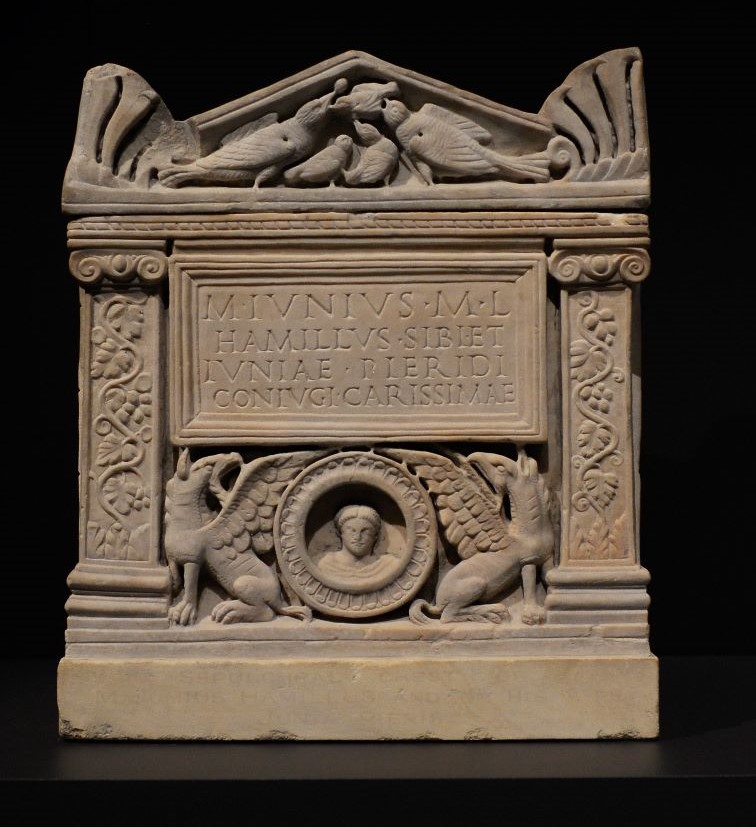
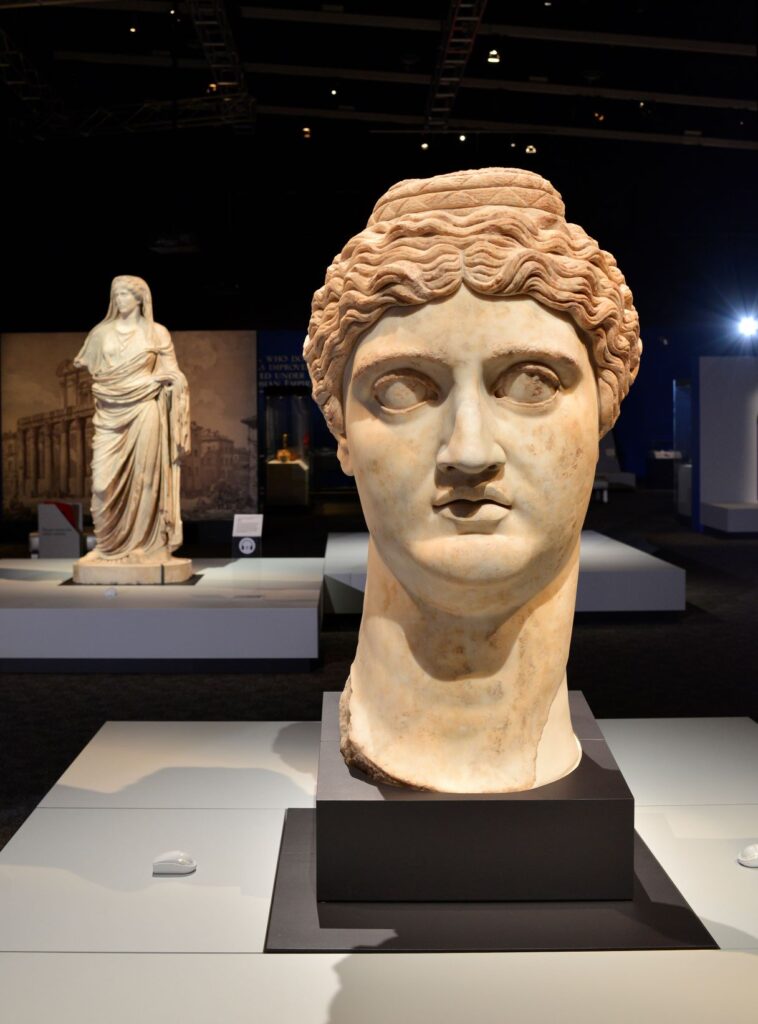
Rome: City + Empire gives audiences a true sense of the scale of the empire, with artefacts that offer representations of the way of life for the aristocracy and nobility, peasants and civilians, women and slaves from right across the breadth of the empire – be they the backwaters of the British Isles to the big smoke of Rome all the way through to the outposts on the Arabian Peninsula.
An unremarkable square green bottle reused as a cinerary urn found in Britain sits beside an intricate marble burial chest with lid from modern day Turkey that held the ashes of a family. That is in essence the vast array of Roman life on full display.
“The items aren’t laid out chronologically or geographically … It radiates culturally and thematically through different aspects of ancient Rome,” Withycomb said.
“It’s really the geographical diversity of the objects that speaks to just how vast the empire was, and shows these different manifestations of Roman culture.”
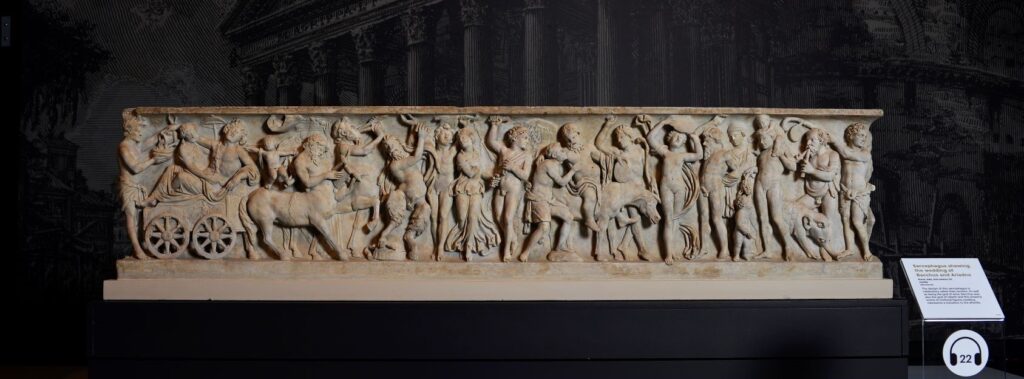
The objects cover a time span of roughly 1,500 years from the 9th century BCE to the 6th century CE. The exhibition highlights the city-state’s transformation from a humble collection of modest villages through to the powerhouse empire that encompassed more than a-quarter of the world’s population, and what that meant for Roman society’s art and culture.
This is not the first instance of collaboration between the NMA and The British Museum, with three major exhibitions in London and Canberra being shared in the past four years.
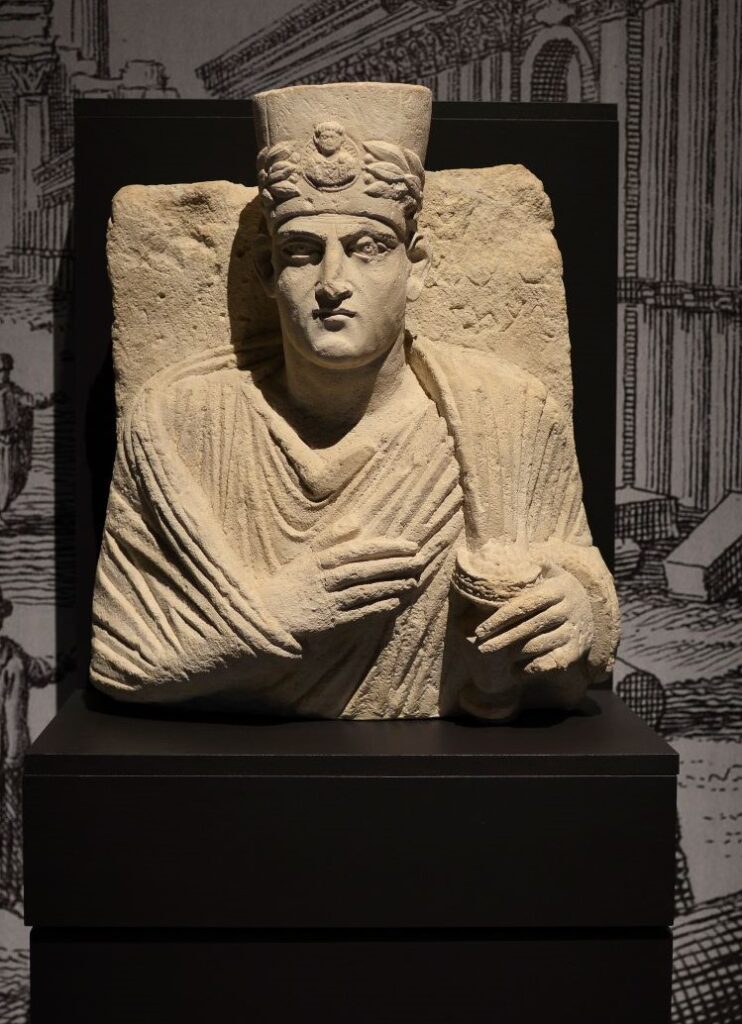
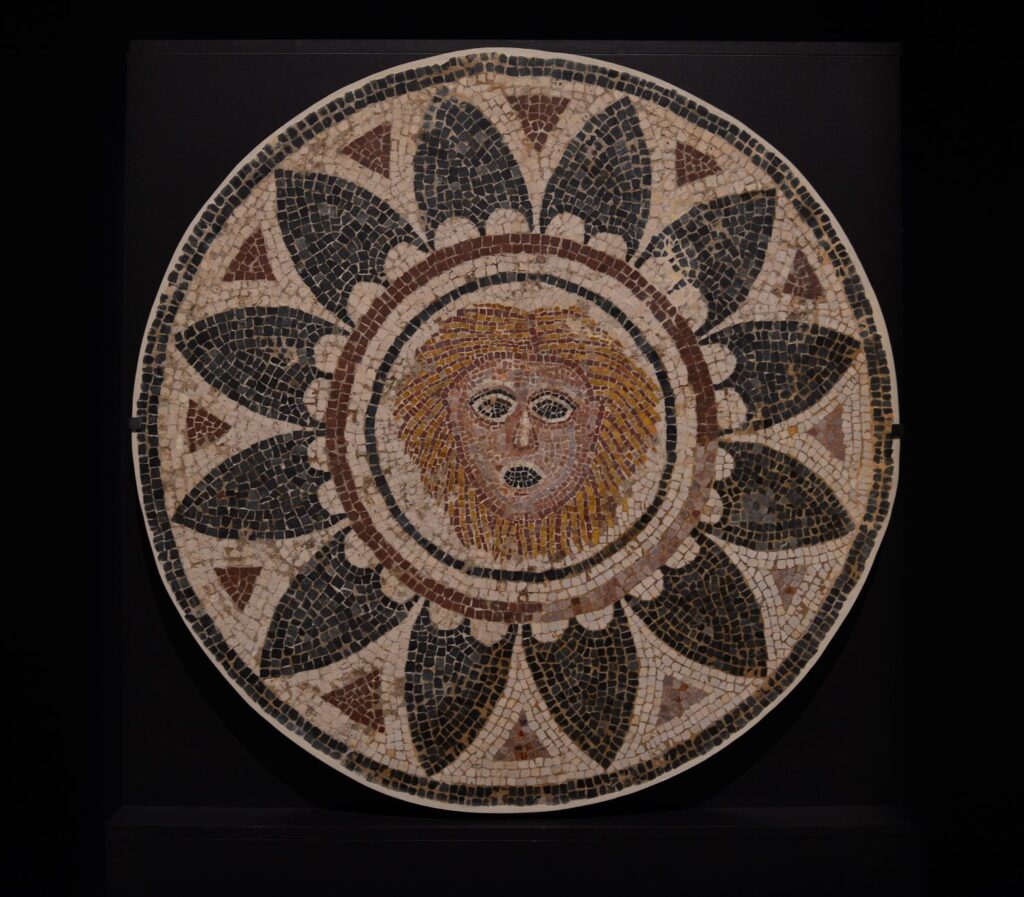
At the launch of Rome earlier this month, it was announced that a new five-year Memorandum of Understanding had been signed by the two institutions, meaning there will be at least another major, joint exhibition hosted at the NMA.
Withycomb said Rome is a special opportunity for Australians to get up close and personal with some breathtaking Roman artefacts right here in Canberra.
“The thing I love about this show is there’s so many large marble objects which are on open display, we haven’t put them in showcases or behind glass.
“The fact that there’s nothing between you and the object is such a special experience, and something we’ve worked really hard for,” she said.
Rome: City + Empire is on until 3 February at the National Museum of Australia; nma.gov.au/rome
For more:








